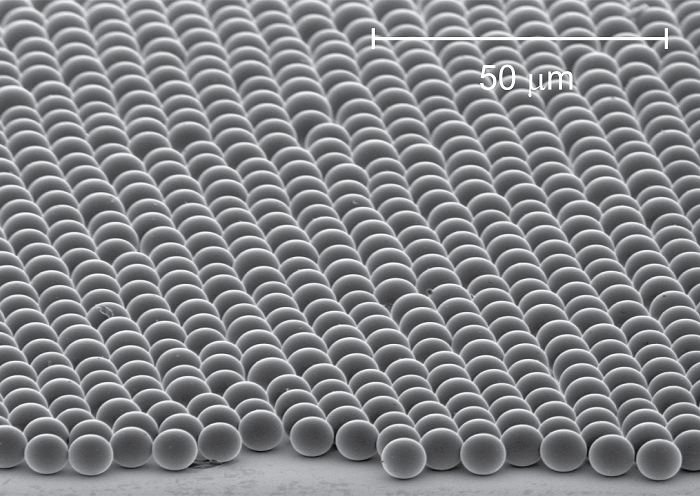By Gina Roos, editor-in-chief
Despite the range of cooling technologies and devices available, heat dissipation and protecting electronics components from overheating are still big challenges in the design world. There are many research projects underway globally to figure out the best ways to cool and protect electronics systems from heat, and to bring those technologies and techniques to scale.
One of the most recent studies comes from researchers at the Catalan Institute of Nanoscience and Nanotechnology (ICN2) in collaboration with the Instituto de Ciencia de Materiales de Madrid (ICMM-CSIC). These researchers have developed a new two-dimensional (2D) thermo-functional material that can remove heat and cool surfaces by emitting infrared radiation. Potential cooling applications range from solar panels to computer systems.
The new research takes aim at reducing global energy consumption and greenhouse gas emissions. Researchers note that cooling systems account for 15% of global energy consumption and 10% of greenhouse gas emissions. A recent International Energy Agency (IEA) report finds that air conditioners and electric fans account for nearly 20% of the total electricity used in buildings globally.
The answer to reducing energy consumption and greenhouse gas emissions in cooling systems is a novel 2D silica material that can remove heat and cool down surfaces where it is placed, without energy consumption or gas emissions, according to members of the ICN2 Phononic and Photonic Nanostructures Group, led by ICREA Prof. Dr. Clivia M. Sotomayor Torres, and the ICMM Photonic Crystals Group.
The research leverages the principle of Earth’s temperature-regulation, called radiative sky cooling. “Although the Earth is heated by the Sun, it also emits infrared radiation to the outer space, as this kind of radiation is not captured by the atmosphere,” said the researchers.
Recommended
Heat shield for electronic devices measures 10 atoms thick
Recommended
Researchers unveil microfluidics heat sink
The material is formed by a self-assembled array of 8 µm-diameter silica spheres, which is described as similar to sand grains but a million times smaller in volume. This layer behaves as an infrared emitter, providing a radiative cooling power of up to 350 W/m2 for a hot surface, such as a solar panel. Researchers said this would remove half of the heat accumulated in a typical solar panel on a clear day, resulting in an eight percent efficiency increase in a solar cell.

(Image: Courtesy of ICN2 researchers)
This research indicates the radiative sky cooling potential of self-assembled crystals. Only a single-layer of microspheres is needed to achieve the best cooling performance. The research shows that the new material can cool down a silicon wafer under direct sunlight irradiation by 14°C. In addition, the new material is six times thinner than current radiative cooling materials such as glass-polymer films and doesn’t use plastics, according to researchers.
In addition to use in solar panels, other potential applications include refrigeration of thermoelectric modules, cooling computer systems in data centers, and smart windows. The research has been published in Small .
At the same time, members of the ICN2 group have developed another material that is scalable and capable of radiative cooling and self-cleaning. This project has been awarded The Collider Tech Award 2019 for further development of radiative cooling materials. A European patent was filed on July 31, 2019, by the ICN2 and ICREA.
MIT project
Researchers at the Massachusetts Institute of Technology (MIT) and in Chile are also using radiative cooling to develop a passive cooling device that does not consume any power. At the center of MIT’s system is a special insulation, using a lightweight polyethylene foam. This aerogel material blocks and reflects the visible rays of sunlight while allowing the infrared rays to pass through.
Prior to using the new insulating layer, the device provided less than half the amount of cooling power, according to the researchers. With the new aerogel, “it blocks more than 90 percent of incoming sunlight, thus protecting the surface below from heating, and is very transparent to infrared light, allowing about 80 percent of the heat rays to pass freely outward.”
MIT and Chilean researchers put the proof-of-concept device to test in Chile’s Atacama desert. The device achieved a cooling of 13°C under full sunlight at solar noon. MIT also performed a similar test at its campus in Cambridge, Massachusetts, achieving just under 10°C cooling.

(Image: Courtesy of MIT researchers)
The researchers said this device could achieve a temperature reduction of up to 50°C. Further work is being done to optimize the system so it can be used to cool applications such as building air conditioning without the need for power.
Although radiative cooling has been integrated into some existing AC systems to improve efficiency, the MIT approach, using the aerogel, will deliver a low-cost solution with much better performance, according to the researchers.
The work was partly supported by an MIT International Science and Technology Initiatives (MISTI) Chile Global Seed Fund grant, and by the U.S. Department of Energy through the Solid State Solar Thermal Energy Conversion Center (S3TEC). The new research was published in Science Advances .
Advertisement
Learn more about Electronic Products Magazine





